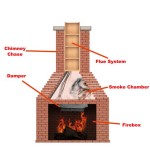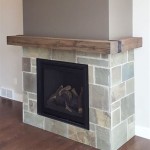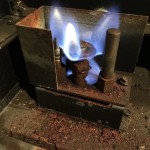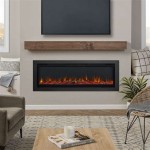Stone Cladding Fireplaces: Enhancing Perth Homes with Natural Elegance and Durability
Stone cladding fireplaces are increasingly sought after in Perth homes, offering a blend of aesthetic appeal, durability, and thermal efficiency. The application of stone cladding transforms ordinary fireplaces into striking focal points, reflecting a connection with nature and adding significant value to the property. Understanding the nuances of stone cladding, including the various types available, installation processes, and maintenance requirements, is crucial for homeowners considering this enhancement.
Stone cladding involves applying thin layers of real or manufactured stone to a surface, typically a fireplace surround. This process creates the illusion of a solid stone structure without the weight and cost associated with using full-thickness stone blocks. The result is a visually appealing fireplace that complements various interior design styles, from rustic to modern.
The popularity of stone cladding fireplaces in Perth stems from the city's architectural preferences, often incorporating natural materials and textures. The warm, earthy tones of stone resonate with the Australian landscape, creating a harmonious indoor environment. Furthermore, Perth's climate, characterized by warm summers and mild winters, benefits from the thermal properties of stone, which helps regulate indoor temperatures.
Types of Stone Cladding for Fireplaces
The selection of stone cladding materials is extensive, offering a wide range of colors, textures, and patterns to suit individual tastes and architectural styles. Both natural stone and manufactured stone options are available, each with distinct characteristics and advantages.
Natural stone cladding includes materials such as granite, limestone, sandstone, slate, and quartzite. Each type of stone possesses unique qualities. Granite, for instance, is renowned for its durability and resistance to heat, making it suitable for fireplace surrounds. Limestone offers a softer, more porous texture, lending a classic and elegant feel. Sandstone, characterized by its warm hues and sedimentary patterns, provides a rustic and natural aesthetic. Slate is known for its dark, sophisticated appearance and inherent water resistance. Quartzite, a metamorphic rock, combines durability with a crystalline sparkle, adding a touch of luxury.
The benefits of using natural stone include its inherent beauty, unique variations in color and texture, and exceptional durability. Natural stone is also environmentally friendly, as it requires minimal processing compared to manufactured alternatives. However, natural stone can be more expensive than manufactured stone and may require specialized installation techniques due to its weight and irregular shapes.
Manufactured stone cladding, also known as cultured stone or artificial stone, is a composite material designed to replicate the appearance of natural stone. It is typically made from a mixture of cement, aggregates, and pigments, molded to resemble various types of natural stone. Manufactured stone offers several advantages, including lighter weight, consistent dimensions, and a wider range of colors and textures.
The lighter weight of manufactured stone simplifies installation and reduces the need for structural reinforcement. Its consistent dimensions allow for easier cutting and fitting, resulting in a more uniform appearance. Manufactured stone is also generally more affordable than natural stone, making it a cost-effective option for homeowners. However, manufactured stone may not possess the same level of durability and natural variation as natural stone. Over time, some manufactured stone products may fade or show signs of wear.
When selecting stone cladding for a fireplace, it is essential to consider the overall design of the room, the desired aesthetic, and the budget. Factors such as color, texture, pattern, and size should be carefully evaluated to ensure a cohesive and visually appealing result. Consulting with a qualified stone cladding specialist can provide valuable insights and guidance in making the right choice.
Installation Process for Stone Cladding Fireplaces
The installation of stone cladding on a fireplace requires careful planning and execution to ensure a structurally sound and aesthetically pleasing result. The process typically involves preparing the surface, applying an adhesive, and carefully placing the stone cladding units.
Surface preparation is a crucial step in the installation process. The existing fireplace surround must be clean, dry, and structurally sound. Any loose or damaged materials should be removed and repaired. In some cases, a scratch coat of cement mortar may be applied to provide a level and textured surface for bonding the stone cladding.
Selecting the appropriate adhesive is also critical. The adhesive must be compatible with both the stone cladding material and the underlying surface. Cement-based mortars and polymer-modified adhesives are commonly used for stone cladding installation. It is essential to follow the manufacturer's instructions regarding mixing ratios, application techniques, and curing times.
The stone cladding units are typically applied in a staggered pattern, creating a natural and visually appealing effect. Each unit should be carefully placed and pressed firmly into the adhesive, ensuring proper adhesion. Spacers may be used to maintain consistent joint widths between the stones. Excess adhesive should be removed promptly to prevent staining.
Grouting is often used to fill the joints between the stone cladding units. Grout enhances the appearance of the fireplace and provides additional protection against moisture infiltration. The grout color should be carefully selected to complement the stone cladding and the overall design of the room. After the grout has cured, it should be sealed to prevent staining and water damage.
The installation of stone cladding on a fireplace is a labor-intensive process that requires skill and experience. It is highly recommended to hire a qualified stone cladding installer to ensure a professional and durable result. A professional installer will have the necessary tools, knowledge, and expertise to handle the various challenges that may arise during the installation process.
Maintenance and Care of Stone Cladding Fireplaces
Proper maintenance and care are essential to preserving the beauty and longevity of a stone cladding fireplace. Regular cleaning and sealing can help protect the stone from staining, water damage, and other forms of deterioration.
Cleaning stone cladding involves removing dust, dirt, and soot that may accumulate over time. A soft brush or cloth and a mild detergent solution can be used to clean the surface. Harsh chemicals and abrasive cleaners should be avoided, as they can damage the stone. It is essential to rinse the surface thoroughly after cleaning to remove any detergent residue.
Sealing stone cladding is a crucial step in protecting it from staining and water damage. Sealants penetrate the surface of the stone, creating a barrier that repels water and other liquids. Different types of sealants are available, each designed for specific types of stone. It is essential to select a sealant that is compatible with the stone cladding material and follow the manufacturer's instructions regarding application and curing times.
The frequency of sealing depends on the type of stone cladding and the level of exposure to moisture and other elements. Generally, stone cladding should be sealed every one to three years. However, it is important to inspect the stone regularly for signs of water penetration or staining. If the stone appears to be absorbing water or is prone to staining, it may need to be sealed more frequently.
In addition to cleaning and sealing, it is important to address any cracks or chips in the stone cladding promptly. Small cracks can be repaired with epoxy or other patching compounds. Larger cracks or damaged stones may need to be replaced. Regular inspections can help identify potential problems early on, preventing more extensive damage.
By following a regular maintenance schedule and addressing any issues promptly, homeowners can ensure that their stone cladding fireplace remains a beautiful and functional focal point for many years to come.
The addition of a stone cladding fireplace can dramatically enhance the aesthetic appeal and value of a Perth home. By carefully selecting the right type of stone, ensuring proper installation, and implementing a regular maintenance plan, homeowners can enjoy the beauty and durability of stone cladding for years to come. The investment in a stone cladding fireplace is an investment in both style and longevity.

Stone Fireplaces Perth Natural

Natural Stone Cladding And Walling Country Earth

Natural Stone Cladding And Walling Country Earth

Stone Cladding Perth Shamrock Masons

Stone Fireplaces Perth Natural

Stone Fireplaces Perth Natural

How To Style Your Fireplace With Stone Cladding Remastone

How To Style Your Fireplace With Stone Cladding Remastone

Shamrock Stone Masons Perth Fireplaces Cladding

Hand Built Stonemasons Perth In Stone Supplier
Related Posts








